In the world of interior design, the challenge of styling small rooms can often feel like a complex puzzle. However, the emergence of Japandi—a unique blend of Japanese and Scandinavian design philosophies—offers an elegant solution to this conundrum. This style, a harmonious fusion of Japanese minimalism and Scandinavian functionality, provides a blueprint for maximizing space while creating aesthetically pleasing and serene environments.
Originating from the need for simplicity and efficiency in living spaces, Japandi emphasizes the beauty of less. Its principles are deeply rooted in the Japanese concept of ‘Ma’—the appreciation of empty space—and the Scandinavian value of hygge, which champions comfort and coziness. The result is a design approach that is not just about the physical look of a room, but about creating a balanced and peaceful living space.
Japandi’s relevance in modern interior design, especially for small spaces, is significant. As urban living spaces become increasingly compact, the need for designs that are not only space-efficient but also visually expansive and calming has risen. Japandi’s focus on decluttered spaces, natural materials, and light, muted color palettes makes it ideal for enhancing the perception of space in small rooms. This design style does not merely seek to fill space but to thoughtfully curate it, emphasizing quality over quantity and fostering a sense of tranquility.
As we delve further into the intricacies of Japandi design, we uncover a range of strategies and ideas that are particularly beneficial for small rooms. From smart furniture choices to clever use of color and light, Japandi offers practical and aesthetic guidance for those looking to transform their compact living areas into havens of minimalist beauty and functionality.
Examples of small spaces transformed with Japandi
Optimized Living Room by Christine in Beijing: In her compact Beijing apartment, Christine embraced Japandi design to maximize their living room space. She chose a low, streamlined sofa and a minimalistic coffee table with hidden storage compartments. Light-colored walls and sheer curtains allowed natural light to enhance the sense of space. Plants were placed in corners and on shelves to bring in natural elements, vital in Japandi design.

Tranquil Bedroom Retreat by Sarah Nguyen in San Francisco: Sarah transformed her small bedroom into a serene Japandi sanctuary. She selected a low-profile bed frame made of natural wood and adorned it with organic, soft-colored linens. A single piece of calming artwork above the bed set the tone for relaxation. To keep the room clutter-free, she chose a sleek nightstand with drawers and used under-bed storage solutions. Soft, diffused lighting fixtures and a couple of green plants completed the peaceful ambiance.
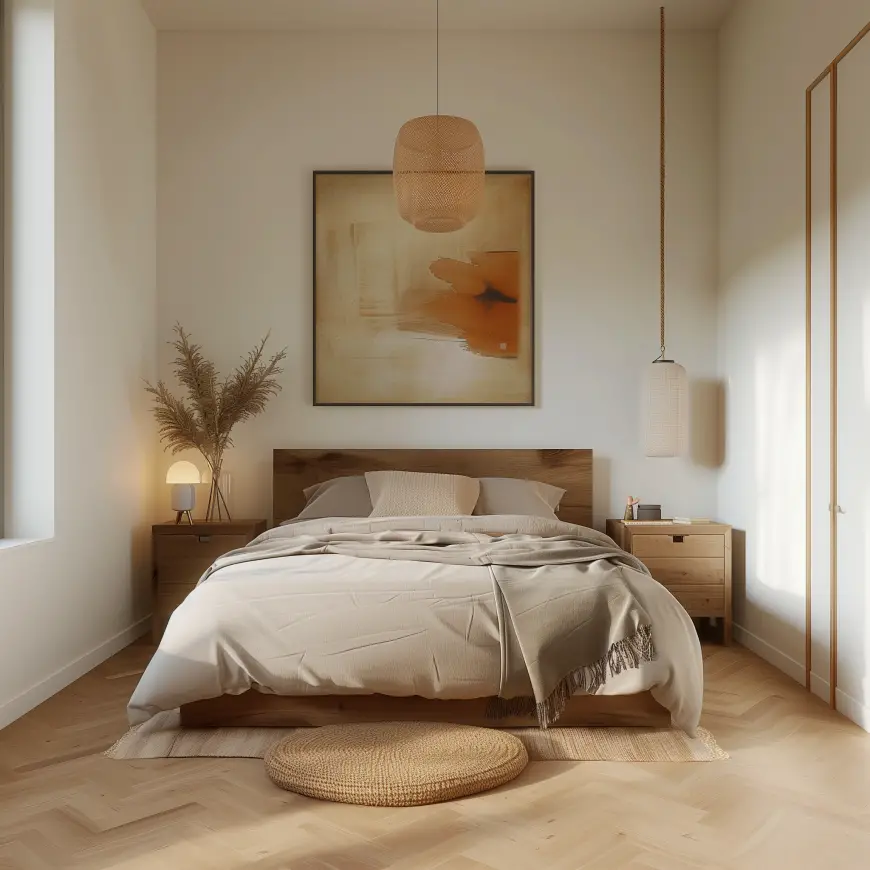
Japandi-style Kitchen Makeover by the Rodriguez Family in Austin: The Rodriguez family revamped their small kitchen by incorporating Japandi principles. They installed streamlined cabinetry in light wood tones and added open shelves for displaying minimalistic dinnerware and plants. The countertops were kept clutter-free, and the use of natural materials like bamboo cutting boards and stone countertops added warmth. The kitchen was lit with warm, energy-efficient LED lights to maintain a cozy yet functional atmosphere.
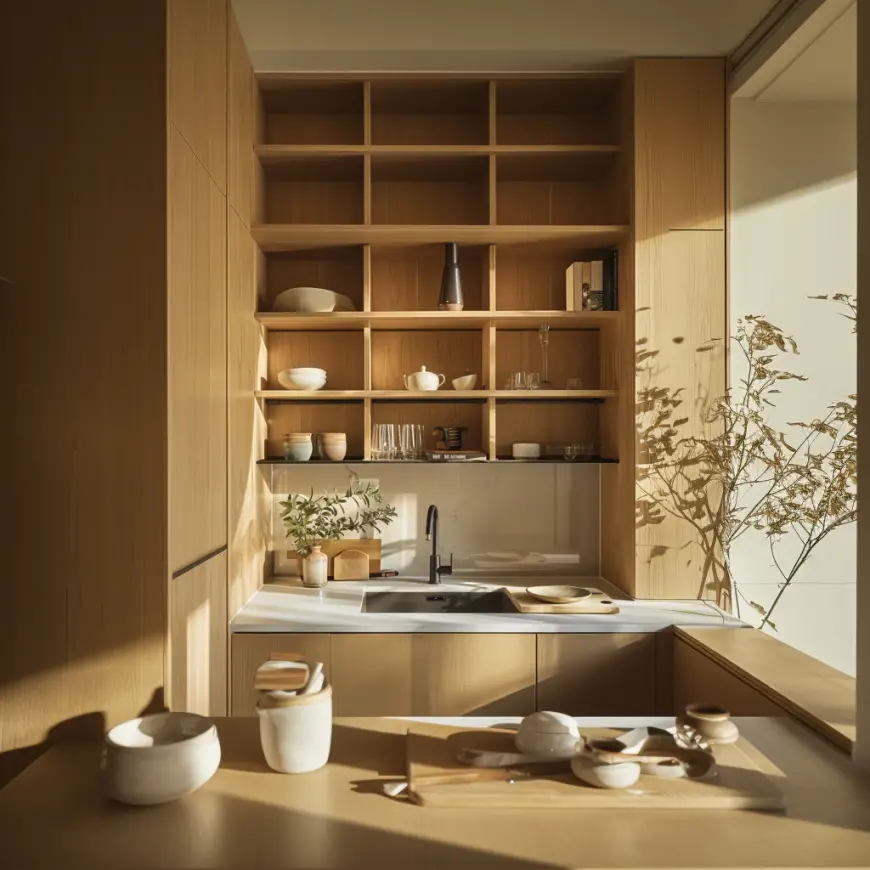
Color Palette and Textures
In Japandi design, the color palette plays a pivotal role in maximizing space. Neutral and muted colors create a serene and cohesive look, making small rooms appear larger and more inviting. Soft whites, greys, and earthy tones like beige, moss green, and light browns are typical in Japandi palettes. These colors reflect light better than dark hues, contributing to a sense of airiness and openness.

Textural contrast is also a defining feature of Japandi. The combination of smooth surfaces and textured fabrics adds depth and interest without overwhelming the space. Natural textures, such as linen, wool, and cotton, alongside wood and bamboo, add warmth and comfort to the room. This layering of textures is key to achieving a rich, tactile environment that feels spacious yet intimate.
Furniture and Layout Optimization
Choosing the right furniture is crucial in small Japandi spaces. The furniture should be low-profile, with clean lines and a lack of ornamentation, reflecting both the Japanese and Scandinavian influences. Multifunctional pieces, like sofas that turn into beds or tables with built-in storage, are particularly beneficial in maximizing space.

The layout of the furniture should promote ease of movement and create an open, breathable space. Keeping furniture away from walkways and using pieces that can be tucked away or serve multiple functions helps achieve this. Mirrors can be strategically placed to reflect light and create an illusion of more space.
Lighting and Ambiance
Lighting in Japandi design is about creating a warm, inviting space that also enhances the perception of size. Maximizing natural light is key; sheer curtains or blinds allow light to permeate while providing privacy. For artificial lighting, soft, diffused light sources that mimic natural light are ideal. Wall-mounted or hanging lights save floor space and add to the minimalist aesthetic.
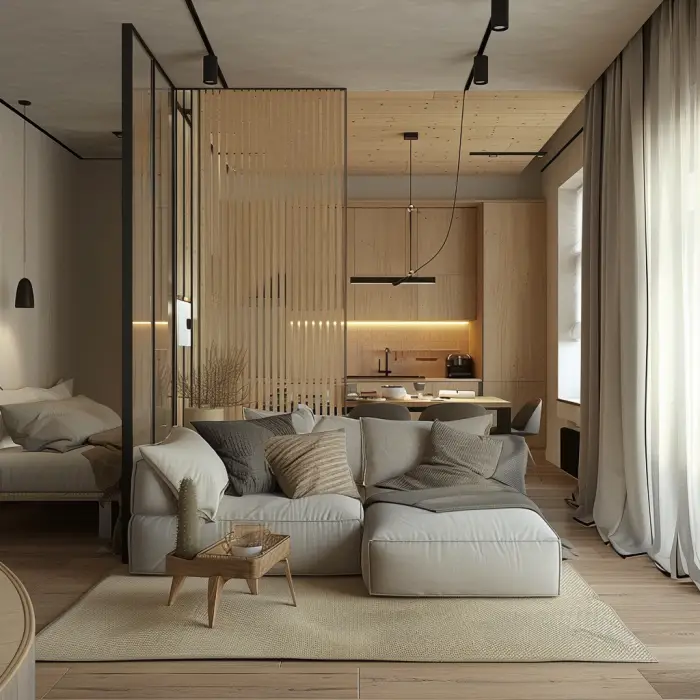
The ambiance in a Japandi-styled room is serene and calming. The use of natural elements and soft lighting contributes to a sense of tranquility, which is especially important in small spaces where clutter and chaos can feel overwhelming.
Decorative Techniques to Maximize Space
Decor in a Japandi room should be carefully selected to maintain the minimalist aesthetic and enhance the sense of space. Mirrors are not just decorative but functional, creating an illusion of depth. Minimalist art pieces or simple, nature-inspired decor can add personality without cluttering the space.
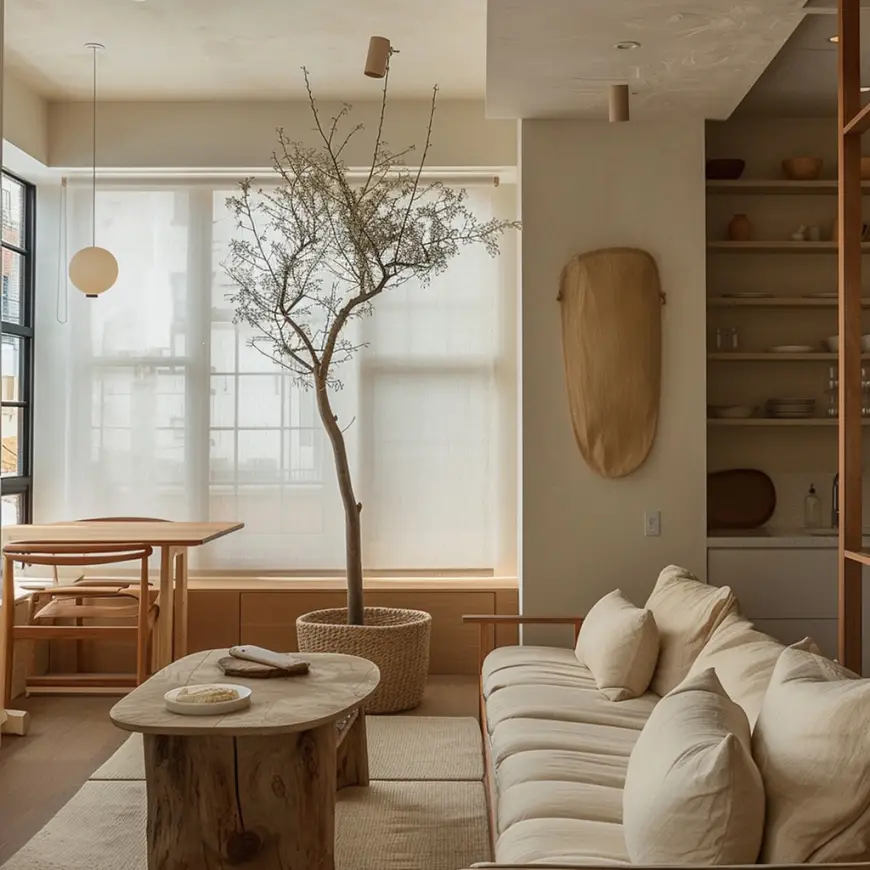
Incorporating plants is a simple yet effective way to add depth and vitality to a small room. They bring in natural elements and color, vital in Japandi design, without taking up too much space.
Maximizing Storage in a Japandi Style
In small spaces, efficient storage solutions are essential. Japandi style meets this need with innovative, integrated storage options that maintain the minimalist look. Hidden storage, like beds with drawers or ottomans with storage space, are ideal for keeping clutter out of sight. Built-in shelves and cabinets that blend into the walls can store essentials without encroaching on the living space.
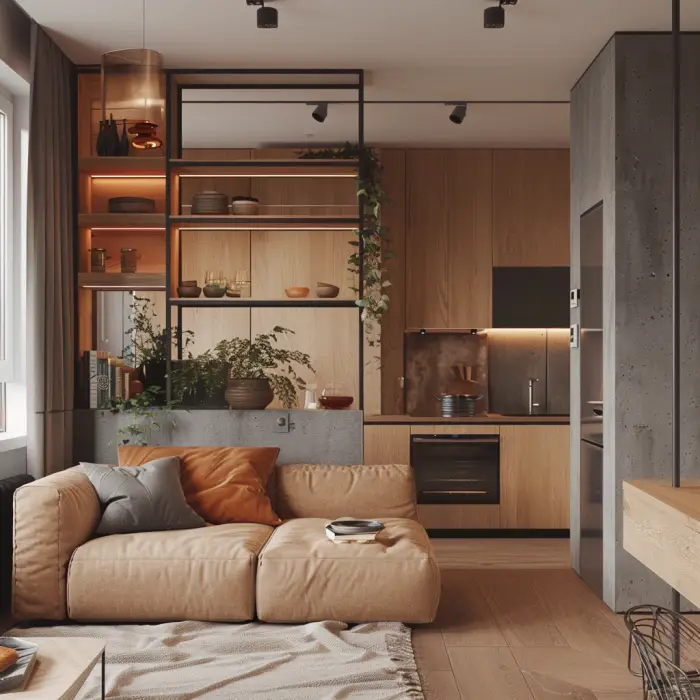
Conclusion: Embracing Japandi in Small Spaces
Japandi design offers a unique solution for small rooms, blending aesthetics with functionality to create spaces that feel both expansive and cozy. Its principles of simplicity, functionality, and connection with nature make it an ideal choice for those looking to maximize space without sacrificing style. Embracing Japandi in small living spaces can transform them into tranquil, efficient, and beautiful environments, proving that even the most compact areas can be designed with elegance and practicality.
What are the key elements of Japandi design for small spaces?
The key elements include a neutral and earthy color palette, the use of natural materials like wood and bamboo, minimalist furniture with clean lines, and an emphasis on functionality and simplicity. Incorporating these elements helps create a serene, spacious feel in small rooms
How can I make my small room look bigger using Japandi design principles?
To make your small room appear larger, focus on decluttering, use light colors for walls and furnishings, choose multifunctional furniture, and maximize natural light. Mirrors can also be strategically placed to create an illusion of more space. These techniques, rooted in Japandi design, help enhance the perception of space.
Can Japandi style be budget-friendly for small spaces?
Absolutely! Japandi style emphasizes simplicity and the use of natural, often locally-sourced materials. You can achieve this look on a budget by selecting fewer but more meaningful pieces, repurposing existing furniture, and incorporating DIY elements. Thrifted items or handcrafted pieces can add a unique touch without breaking the bank.

